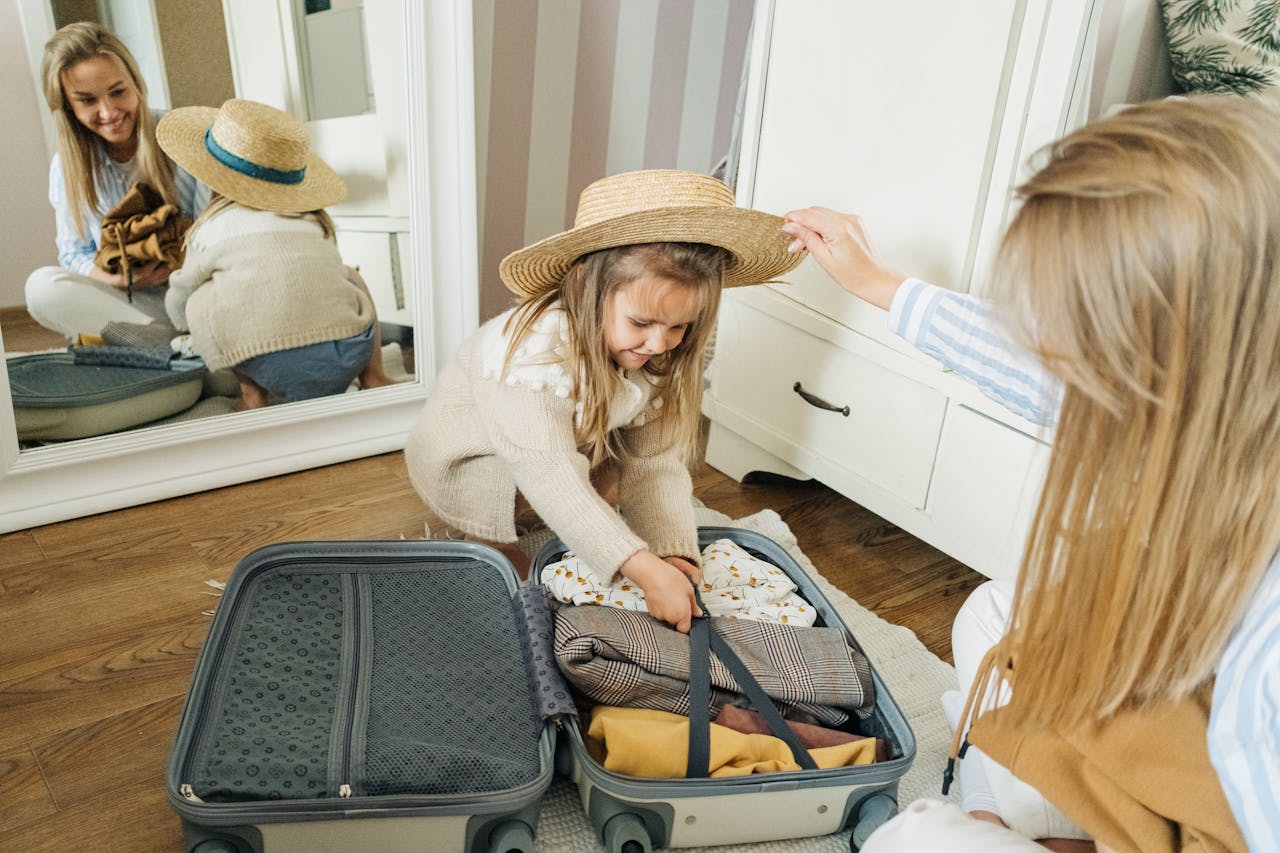With the February half-term fast approaching, many families are gearing up for a much-needed holiday. This year, more Brits than ever are opting for a staycation, with 52% planning to holiday within the UK in 2025, compared to 46% heading abroad. Whether you’re venturing on a countryside retreat or enjoying a coastal getaway, packing efficiently is key to making the most of your family break.
We spoke to Laura Miller, Marketing Manager at Away Resorts, one of the UK’s most popular family holiday providers, who compiled a list of 8 essential packing tips to make your family’s half-term holiday stress-free and enjoyable.

Less is more
One of the most practical family travel tips is to pack light, and not stuff your case full of unnecessary things.
For example, rather than packing different types of outfits, choose versatile clothing that can cover all bases. Also, plan to do laundry, so you can pack fewer clothes and simply wash them. And as always, you can consider buying some items at your destination, instead of taking up valuable space in your bags.
Don’t forget items to preserve memories
One great thing about a family holiday is the memories that each person makes. These can even be slightly different, or from different perspectives too. For example, everyone will have their favourite moment from the trip, or a unique thing they saw that stuck with them.
Therefore, make sure you bring journals and diaries for everyone to document your adventures in. These can be good to write in during rest or quiet periods in the day, in-between activities.
It’s also worth bringing a camera to print these memories rather than relying on your phone camera.
Packing cubes are your best friend
Use packing cubes to keep each family member’s clothes separate and organised. They maximise suitcase space, reduce clutter, and make unpacking and finding essentials quick and easy. If you don’t have packing cubes, a zip-lock bag will do.
You can even pre-pack complete outfits (including underwear and socks) in large bags for each day. This makes dressing kids hassle-free and keeps everything organised.
Bring a pillowcase, not a pillow
Instead of packing a bulky pillow, bring a pillowcase and stuff it with soft clothes or jackets when needed. This saves space and doubles as a laundry bag on the way back. Plus, it’s a comfy and portable option for naps on the go!
Roll, Don’t Fold
Save space and avoid wrinkles by rolling clothes instead of folding them. This method works especially well for kids’ clothing and makes it easier to spot what you need quickly. Plus, rolled clothes fit perfectly into packing cubes or any small space.
Bring basic medicine and first aid
Always pack a basic medical kit. You never know when you might need anything from a simple plaster to a wrap-around bandage. Your accommodation will likely have supplies too, but it’s good to bring your own – especially for the car journey or days out.
Some things to bring include:
- Pain relievers for both adults and children
- Plasters and bandages
- Antiseptic wipes
- Any prescription medications
- Common remedies for travel sickness
Follow a packing checklist
If you’re worried about forgetting something for the family trip, create a comprehensive packing list. This way, you can follow an order and check things off as you pack them in the weeks or days leading up to your holiday.
However, this isn’t just for the days before your trip, it can also be used when you’re leaving. This way, you can make sure anything you took out of your case is back in it before you leave your accommodation to head back home. The list can be re-used year-on-year.
Consider bringing back the car roof box
If you’re struggling to fit everything in the car for a family holiday, a roof box can be a game-changer. It provides extra storage space, making long journeys more comfortable by keeping the boot and back seats clutter-free.
Make sure to pack it wisely, placing lighter items on top and securing everything properly to avoid shifting during travel. It’s also worth checking weight limits and ensuring the box is locked before setting off. Once you’ve used a roof box for a trip, you’ll wonder how you ever managed without one—it’s a travel essential you can rely on year after year.

